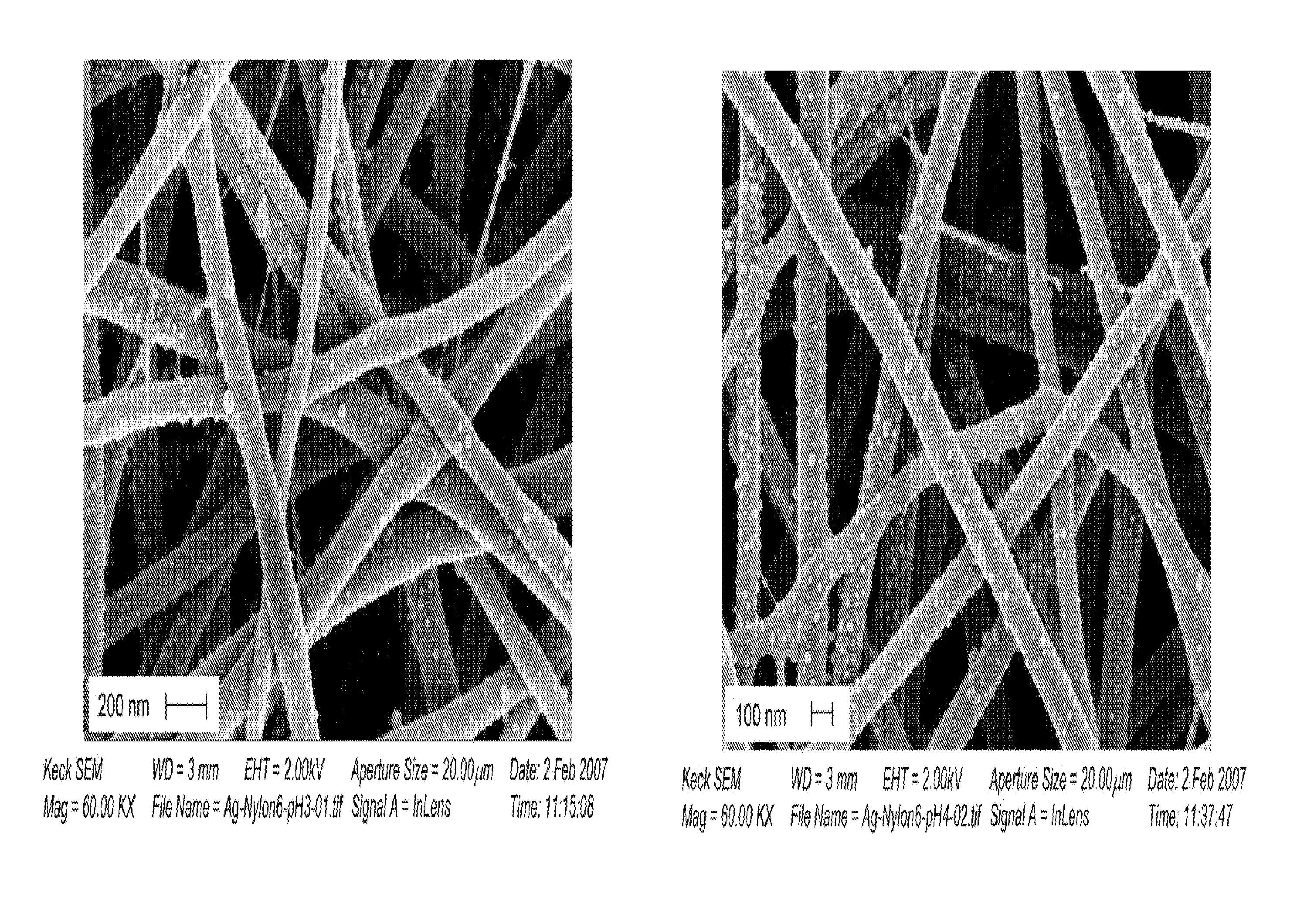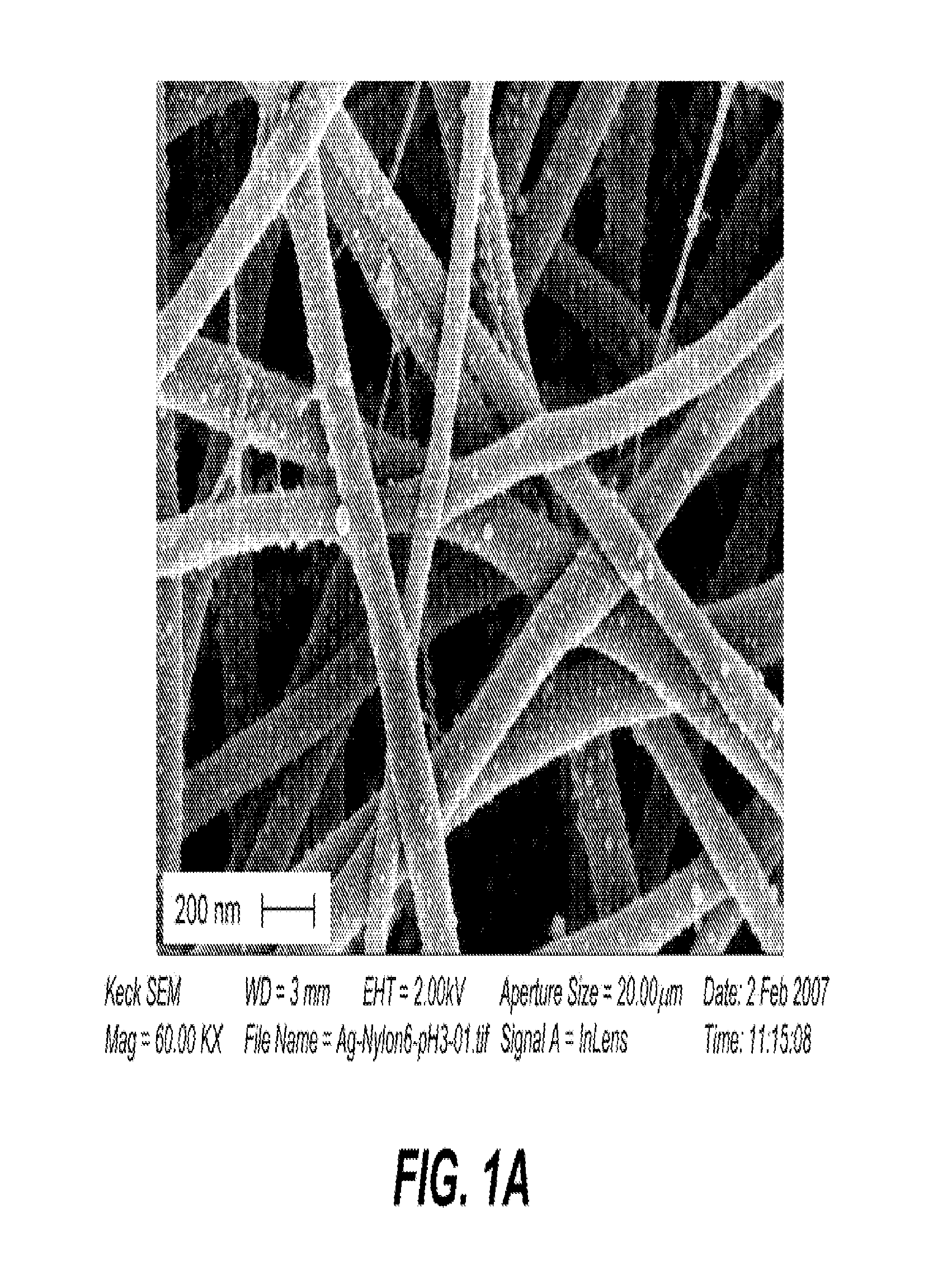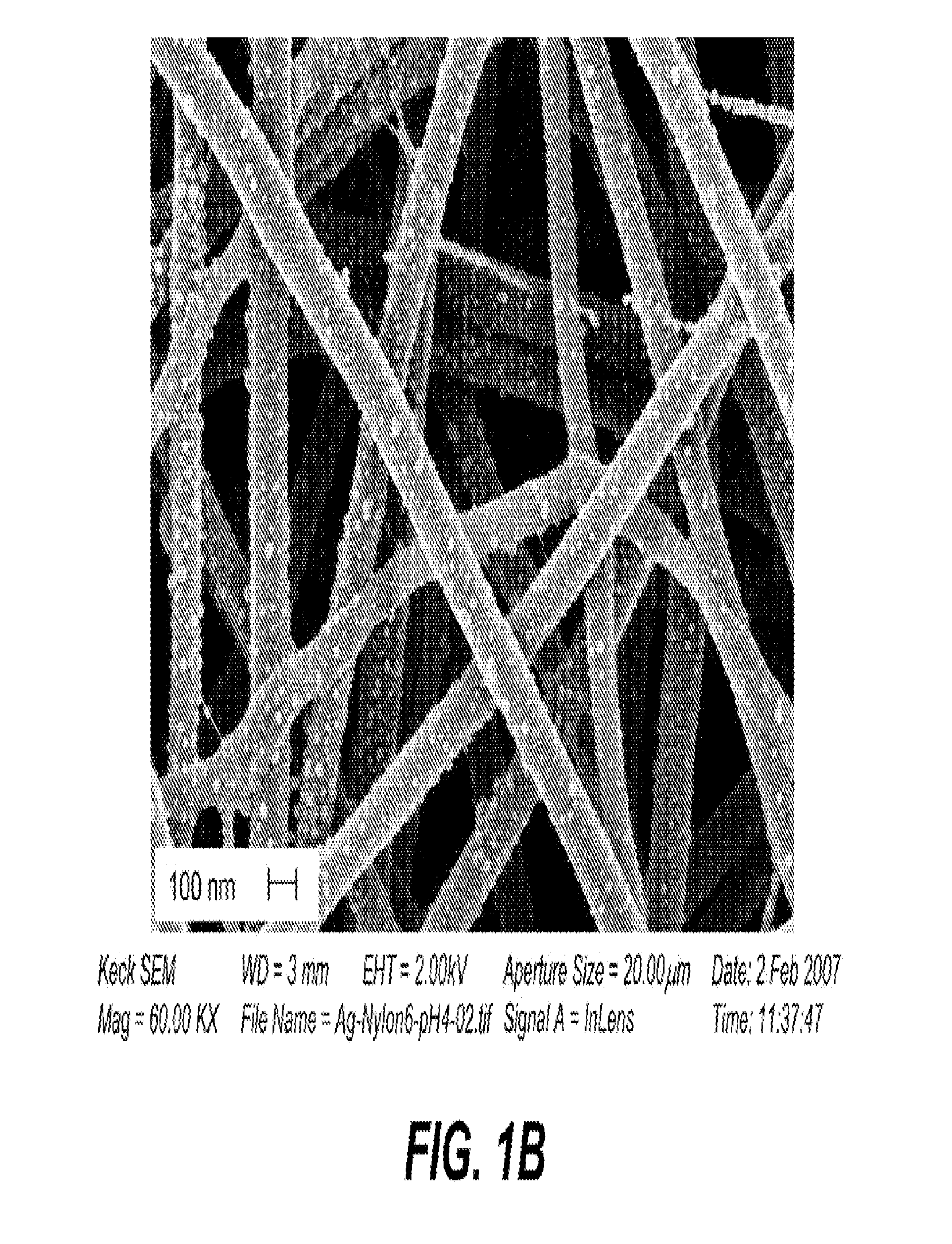Conformal particle coatings on fibrous materials
a technology of fibrous materials and conformal particles, applied in the field of conformal particle coating preparation and application, to achieve the effect of enhancing the wound healing properties of the substrate and preventing microbial contamination of the wound
- Summary
- Abstract
- Description
- Claims
- Application Information
AI Technical Summary
Benefits of technology
Problems solved by technology
Method used
Image
Examples
example 1
6.1 Example 1
Efficient Assembly of Metal Nanoparticles on Electrospun Nylon 6 Nanofibers by Control of Interfacial Hydrogen Bonding Interactions
6.1.1 Summary
[0421]This example demonstrates an efficient, one-step route for uniformly assembling preformed Ag metal nanoparticles (NPs) on the surface of electrospun nylon 6 nanofibers that is driven by interfacial hydrogen bonding interactions. Metal nanoparticles (Ag, Au, Pt) were assembled on electrospun nylon 6 nanofibers by controlling the interfacial hydrogen bonding interactions between the amide groups in the nylon 6 backbone and the carboxylic acid groups capped on the surface of the metal nanoparticles.
[0422]Metal nanoparticles were synthesized in aqueous media using sodium citrate as a stabilizer. Nylon 6 nanofiber mats, produced by electrospinning, were immersed into pH-adjusted solutions of metal nanoparticles. Since silver and silver ions have long been known to exhibit strong inhibitory and bactericidal effects as well as a ...
example 2
6.2 Example 2
Surface Bonding of Metal and Metal Oxide Nanoparticles on Cellulose Substrates
6.2.1 Summary
[0452]This example demonstrates surface bonding of metal nanoparticles on cellulose substrates using two approaches: direct assembly of metal nanoparticles on cationic cellulose substrates and in-situ synthesis of metal nanoparticles on cationic and anionic cellulose substrates.
6.2.2 Background
[0453]In situ synthesis of metal nanoparticles on porous cellulose fibers has been previously demonstrated by He et al. (2003, Chem. Mater. 15, 4401-4406). Metal nanoparticles were formed on porous cellulose fibers by impregnation and reduction.
[0454]Hyde et al. (2007, Effect of surface cationization on the conformal deposition of polyelectrolytes over cotton fibers. Cellulose (2007) 14:615-623, DOI 10.1007 / s10570-007-9126-z) showed assembly of a solution of charged polymers onto fibrous material. These polymers represented continuous domains and assembled onto the fibrous materials as films...
example 3
6.3 Example 3
Surface Bonding of Organic Particles on Cellulose Substrates
6.3.1 Summary
[0481]This example demonstrates surface bonding of polystyrenesulfonic acid (PSS) particles on cellulose substrates using direct assembly of PSS particles on cationic cellulose substrates.
6.3.2 Material and Methods
[0482]Cationic cellulose was prepared using the methods described in Section 6.2.3.
[0483]Spherical PSS colloidal particle suspensions at a concentration of 2.5% wt. were purchased from Polysciences, Inc. in diameters of 0.2, 0.5, and 1.0 micrometers and diluted with deionized water to 0.016 mg PSS spheres per mL of suspension. Mushroom cap shaped particles, approximately 1.2 micrometers in diameter, at a concentration 4.2% wt. were diluted with deionized water to 0.009 mg PSS particles per mL of suspension.
[0484]The process used to deposit PSS particles onto cationic cellulose was achieved by immersing the specimens into aqueous colloidal solutions of negatively charged PSS particles.
[048...
PUM
| Property | Measurement | Unit |
|---|---|---|
| cross-sectional diameters | aaaaa | aaaaa |
| size | aaaaa | aaaaa |
| diameters | aaaaa | aaaaa |
Abstract
Description
Claims
Application Information
 Login to View More
Login to View More - R&D
- Intellectual Property
- Life Sciences
- Materials
- Tech Scout
- Unparalleled Data Quality
- Higher Quality Content
- 60% Fewer Hallucinations
Browse by: Latest US Patents, China's latest patents, Technical Efficacy Thesaurus, Application Domain, Technology Topic, Popular Technical Reports.
© 2025 PatSnap. All rights reserved.Legal|Privacy policy|Modern Slavery Act Transparency Statement|Sitemap|About US| Contact US: help@patsnap.com



